The East India Company Flag and ensign that was adopted in 1801 and relinquished in 1858, has thirteen horizontal stripes alternating red and white with the Flag of the Unted Kingodm in the canton.
The British story needs a bigger canvas as what started as a trading post in Surat became the ruler of a sub-continent and their impact was huge compared to previous invaders. Here a quick walk through from their times in Surat needs to be stated before getting into their role in Kerala and their impact on Cochin, which is our main point of interest.
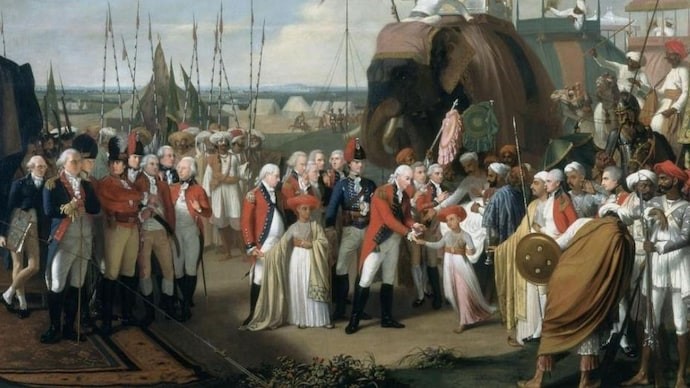
The British landed in India in Surat on August 24, 1608. While India has a rich and recorded history going back 4000 years to the Indus Valley Civilisation in Harappa and Mohenjo-Daro, Britain had no indigenous written language until the 9th century almost 3000 years after India. The sea route connecting Europe to India came into the limelight in 1498 when Portuguese explorer Vasco Da Game came to Calicut. This made India the centre of attention of Europe’s trade circuit and this wave ended with the British ruling the entire sub-continent.
The British East India Company was formed in 1599 under a charter granted by Queen Elizabeth in 1600. The British Joint Stock Company, as it was known earlier, was founded by John Watts and George White for trade with Asian nations in the south and south-east. British merchants and aristocrats held shares in this joint stock company. The British government had no controlling authority over the company and they shared no direct link.
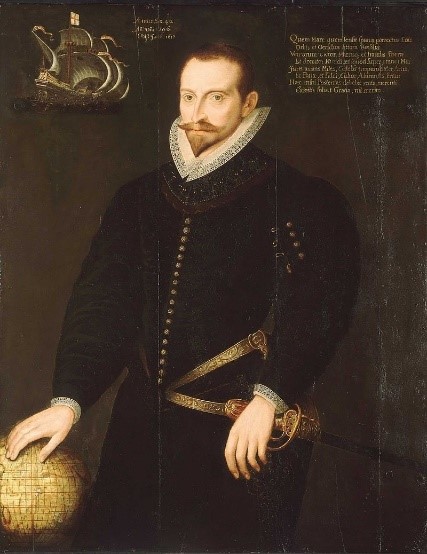
James Lancaster commanded the first East India Company voyage in 1601.
The British East India Company came to India as traders in spices, a very important commodity in Europe back then as it was used to preserve meat. Apart from that, they primarily traded in silk, cotton, indigo dye, tea and opium.
Jahangir investing a courtier with a robe of honour, watched by Sir Thomas Roe, English ambassador to the court of Jahangir at Agra.
Mughal emperor Jahangir granted a farman to Captain William Hawkins permitting the English to erect a factory at Surat in 1613. In 1615, Thomas Roe, the Ambassador to James I, got an imperial farman from Jahangir to trade and establish factories all across the Mughal empire. Soon, the Vijaynagara Empire also gave the company permission to open a factory in Madras and the British company started to eclipse out the other European trading companies in their rising power. A number of trading posts were established all over the east and west coasts of India and British communities developed in the three major trading towns of Calcutta, Madras and Bombay.
Job Charnock, the founder’ of Kolkata, established a factory in 1690 at Suttanati. The city of Calcutta was finally founded in 1698 when the British acquired the zamindari of three villages Suttanati, Kalikata and Govindpur. Soon after, Fort William was set up in 1700. In 1717, John Surman obtained a farman from Farrukhsiyar, which gave large concessions to the company. This farman has been called the greatest win for the British East India Company.
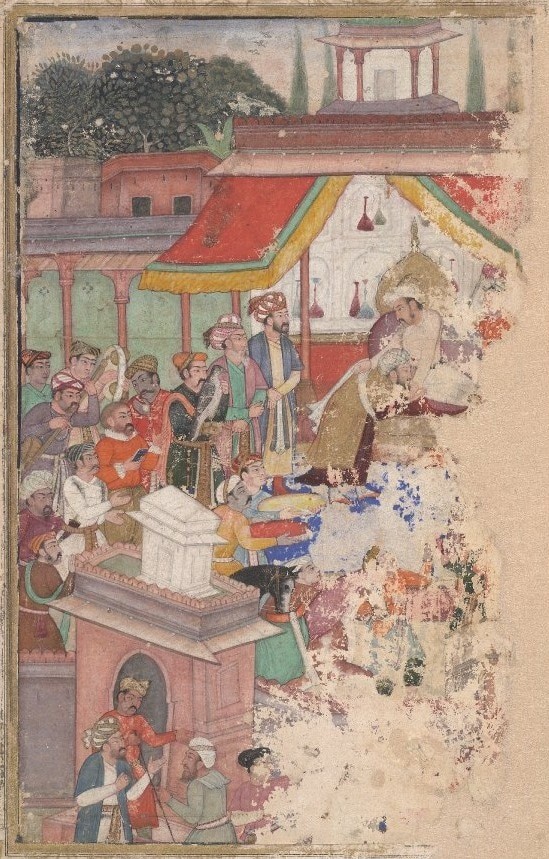

Mughal emperor Shah Alam II hands a scroll to the governor of Bengal, Robert Clive, transferring tax collecting rights in Bengal, Bihar and Orissa to the East India Company.
The early East India Company realised that India was one big collection of provincial kingdoms and wanted to concentrate all the resources. Thus, the company stared to meddle in Indian politics and started to see a steady rise in their fortunes.
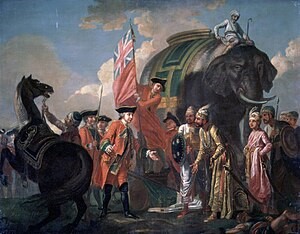
The first biggest strike from the British on India was the defeat of the Nawab of Bengal, Siraj-ud-daulah, at the hand of Robert Clive in the Battle of Plassey in 1757. It was followed by the Battle of Buxar in 1764 wherein Captain Munro defeated the joint forces of Mir Qasim of Bengal, Shujauddaula of Awadh and Mughal king Shah Alam II.
Slowly but surely, the East India Company started to transform from a trading company to a ruling one. The powers of the East India Company kept growing till 1858 when it was dissolved after the Revolt of 1857 and the British Crown took direct control of India to begin the British rule.
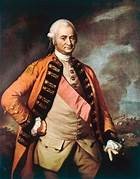
Robert Clive, 1st Baron Clive, KB, FRS, also known as Clive of India, was the first British Governor of the Bengal Presidency. Clive has been widely credited for laying the foundation of the British East India Company rule in Bengal.
The British in Kerala:
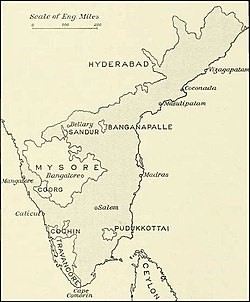
The Madras Presidency or Madras Province, officially called the Presidency of Fort St. George until 1935, was an administrative subdivision (province) of India. To its greatest extent, the presidency included most of southern India, including all of Andhra Pradesh, almost all of Tamil Nadu, and some parts of Kerala, Karnataka, Odisha, and Telangana in the modern day. The city of Madras was the winter capital of the presidency and Ooty was the summer capital.
The coastal regions and northern part of the Island of Ceylon at that time were a part of Madras Presidency from 1793 to 1798, when it became a separate Crown colony. Madras Presidency was neighboured by the Kingdom of Mysore on the northwest, the Kingdom of Cochin on the southwest, the Kingdom of Pudukkottai in the center, and the Kingdom of Hyderabad on the north. Some parts of the presidency were also flanked by the Bombay Presidency (Konkan) and Central Provinces and Berar (Madhya Pradesh).
The most prominent contribution of the British to Cochin was establishing a well laid out Port and connecting this Port with the necessary infrastructure with Railways, Bridges, and Roads forming the backbone for enhancing trade from this Port.
